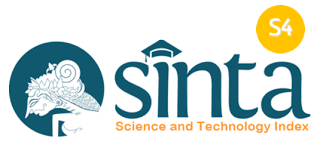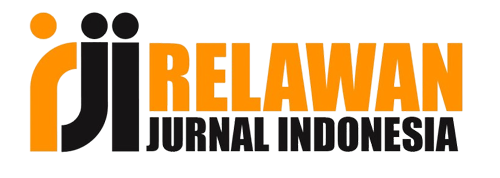Evaluating English Teachers’ Perception of Community Language Learning in Enhancing Speaking Confidence
Abstract
Building self-confidence in speaking is a fundamental challenge in English language learning, particularly in non-native settings. Many students experience anxiety and hesitation when asked to speak in a second language, making it essential to adopt supportive teaching approaches. Addressing this issue requires innovative and student-centered teaching methods that foster a positive and engaging learning atmosphere. This study examines English teachers' perceptions of Community Language Learning (CLL) in enhancing students' self-confidence in speaking classes. Adopting a qualitative research design, the study involved interviews with four experienced English teachers at SMP 2 Boja, who shared their insights and classroom experiences. The findings indicate that CLL creates a supportive, low-pressure classroom environment that helps reduce language anxiety and encourages active student participation. Teachers emphasized the importance of the teacher's supportive role, the use of group interactions, and the collaborative nature of CLL in boosting students' speaking confidence. The study concludes that CLL is an effective method for improving students' self-confidence in speaking activities, highlighting its potential for broader application in similar educational contexts
Keywords: Community Language Learning (CLL), English Speaking Confidence, Teacher Perceptions
Full Text:
PDFReferences
Bogdan, R. C., & Biklen, S. K. (2007). Qualitative research for education: an introduction to theories and methods (A. E. Burvikovs (ed.); Fifth Edit). Pearson.
Brown, G., & Yule, G. (1988). Discourse Analysis. Cambridge University Press.
Bussman, H. (2006). Routledge Dictionary of Languange and Linguistics. Routledge.
Daulay, E. (2019). community language learning to improve students’ speaking skill. English Journal for Teaching and Learning, 7(2).
Fayed, I. (2016). The influence of community language learning approach on improving the students’ english speaking skills at the Arab American University-Jenin.
Goddard, C., & Wierzbicka, A. (2014). Words and Meanings Lexical Semantics across Domains, Languages, and Cultures. Oxford University Press.
Halimah. (2018). Boosting students’ speaking ability through Community Language Learning. Studies in English Language and Education, 5(2), 204–216. https://doi.org/10.24815/siele.v5i2.9697
Hosni, S. Al. (2015). Speaking Difficulties Encountered by Young EFL Learners Speaking Difficulties Encountered by Young EFL Learners. June 2014.
Jahan, Bari. T. (2020). Community Language Learning (CLL) in tertiary level: A learner friendly Approach to ELT in Bangladesh. Journal of Research and Innovation in Language, 2(3), 120–125.
Koba, N., Ogawa, N., & Wilkinson, D. (2020). Using the Community Language Learning Approach to Cope with Language Anxiety. The Asian Conference on Education / ACE 2020 Surviving & Thriving: Education in Times of Change.
Leong, L., & Ahmadi, S. M. (2017). An Analysis of Factors Influencing Learners ’ English Speaking Skill. International Journal of Research in English Education, 34–41.
Liao, P. (2014). Flipped Learning: Integrating Community Language Learning with Facebook via Computer and Mobile Technologies to Enhance Learner Language Performances in Taiwan. Multidisciplinary Social Networks Research, 92–101.
Magsalin, C. N. (2023). Community Language Learning in Tertiary-level Teachers. Asian Journal of Education and Social Studies, 48(1), 78–88.
Natalia, S. (2017). CLL (Community Language Learning) method and students’ interest towards students’ speaking ability. English Language Education and Literature, 2(2), 105–110.
Nety, Wahyuni B, A., & Nurhaeni. (2020). Students’ Self Confidence in Speaking English. English Education Journal, 124, 8–16. https://doi.org/10.55340/e2j.v6i1.284
Newman, I., & Ridenour, C. (1998). Qualitative-Quantitative Research Methodology: Exploring the Interactive Continuum Qualitative-Quantitative Research: A False Dichotomy. Educational Leadership Faculty Publications, 1–12.
Paradewari, D. S. (2017). Investigating Students’ Self-Efficacy of Public Speaking. International Journal of Education and Research, 5(10), 97–108. https://doi.org/ISSN: 2411-5681
Rakasiwi, R., Silalahi, M. M. R., Tampubolon, M., & Siahaan, R. A. E. (2023). The use of community language learning (CLL) method to enhance the students’ english speaking of AMIK Medicom Medan. Cendikia : Media Jurnal Ilmiah Pendidikan, 13(6), 1004–1009.
Ramadhani. (2020). The Increasing of Students’ English Speaking by Using Community Language Learning (CLL) through Students English Association of LP3I (SEAL) at Politeknik LP3I Medan. Journal (BIRCI-Journal), 3(3), 2534–2542.
Surahman, et. al. (2021). The Effect of Community Languange Learning and Emotional Intelligence on Students Speaking Skill. Lentera Pendidikan : Jurnal Ilmu Tarbiyah Dan Keguruan, 24(1), 82–90.
Wardhaugh, R., & M. Fuller, J. (2015). An Introduction to Sociolinguistics. John Wiley & Sons.
Wompere, R. (2018). The use of community language learning method in teaching english to women painters and sellers of bark painting in Papua-Asei Island. Advances in Social Science, Education and Humanities Research, 263(1).
Yee, K. M., Jafre, M., & Abidin, Z. (2014). The Use of Public Speaking in Motivating ESL Learners to Overcome Speech Anxiety. International Journal on Studies in English Language and Literature, 2(11), 128-129.
Zaswita, H. (2019). Conversation Circle Technique of Community Language Learning (CLL) for Better Speaking Ability. Curricula: Journal of Teaching and Learning, 4(1).
DOI: http://dx.doi.org/10.30984/jeltis.v4i2.3267
Article Metrics
Abstract view : 281 timesPDF - 132 times
Refbacks
- There are currently no refbacks.







